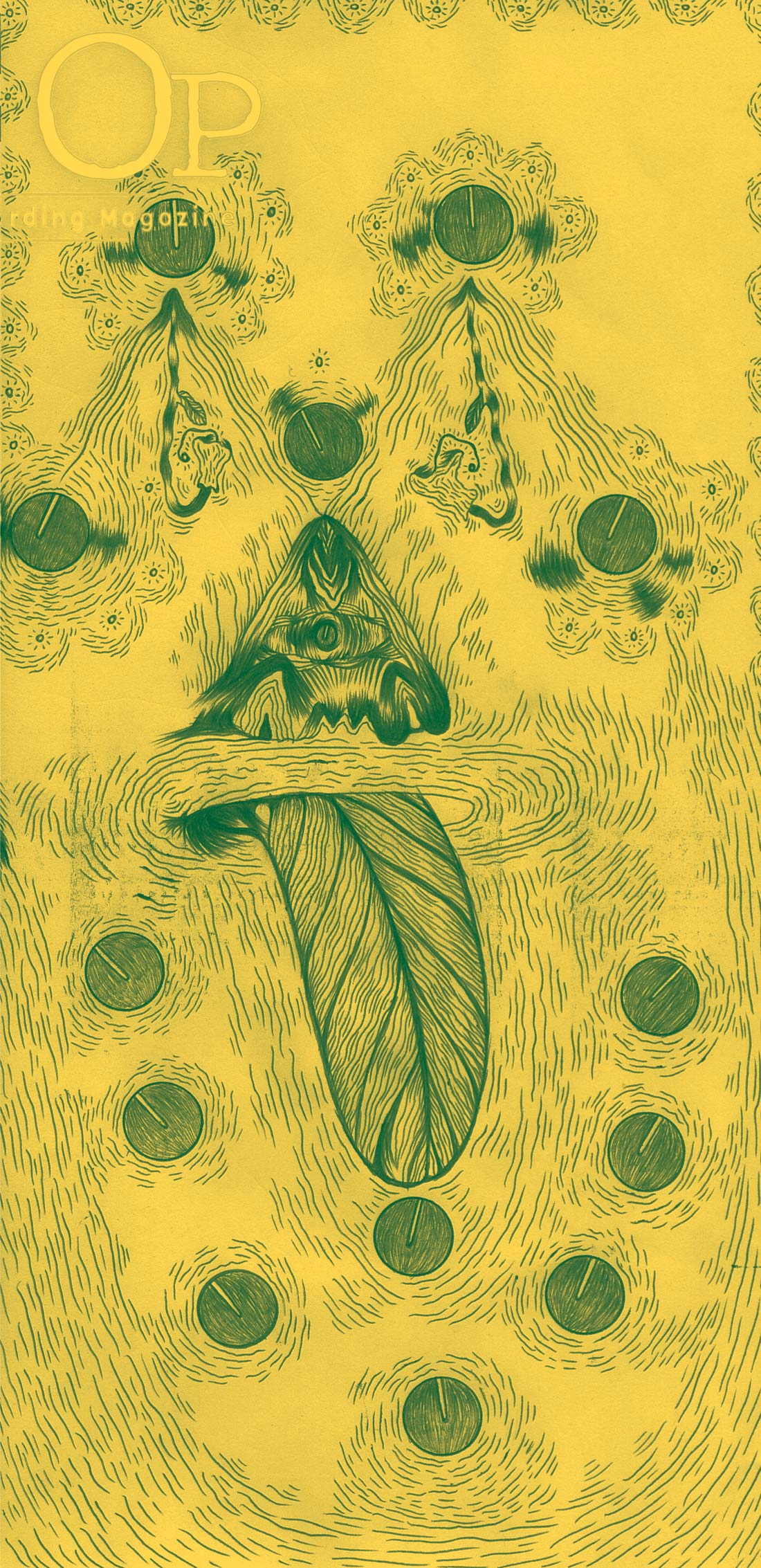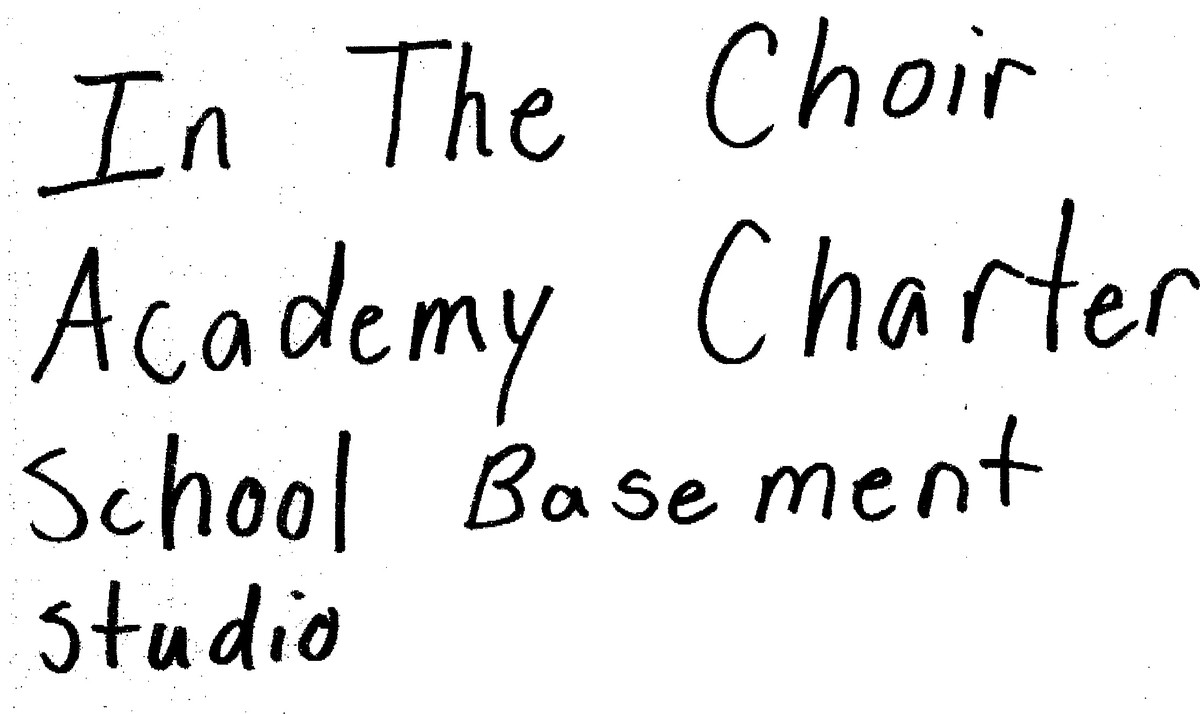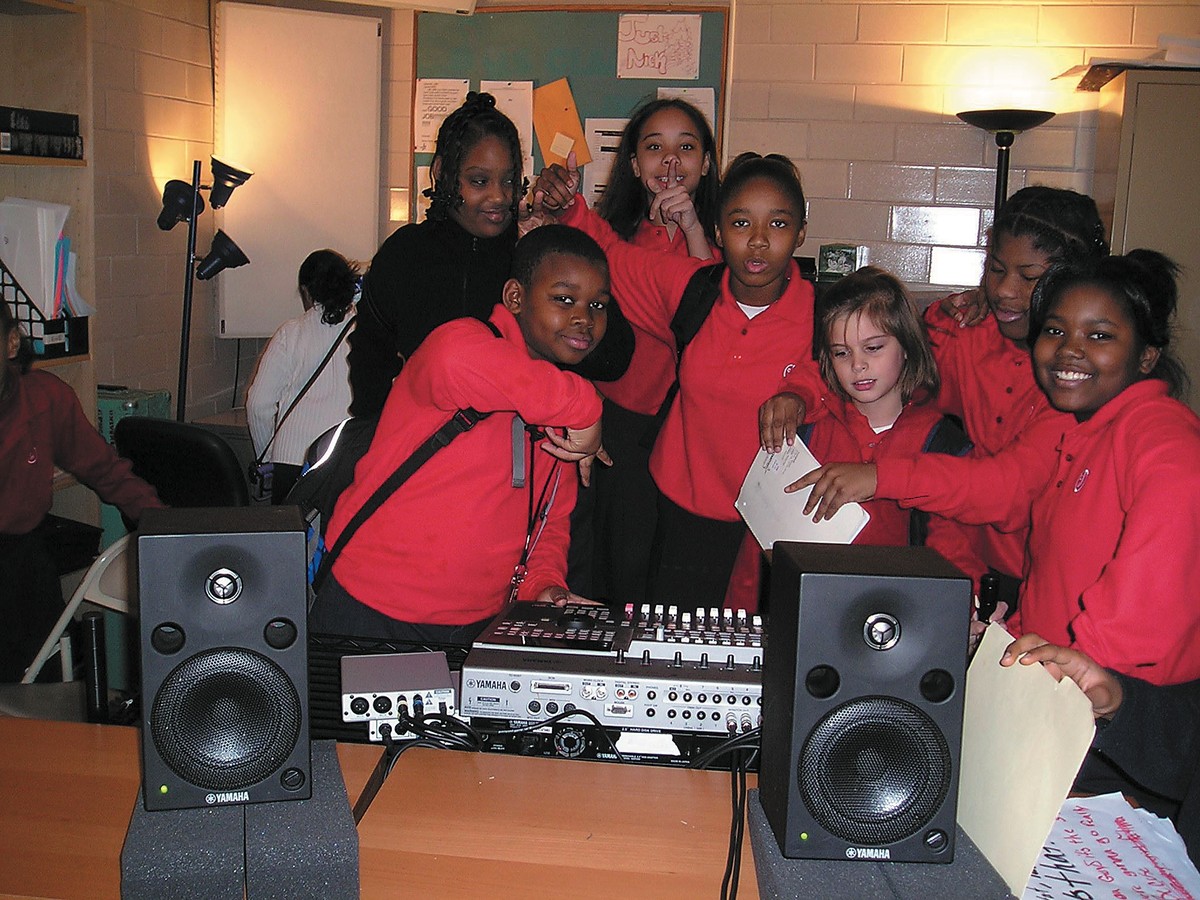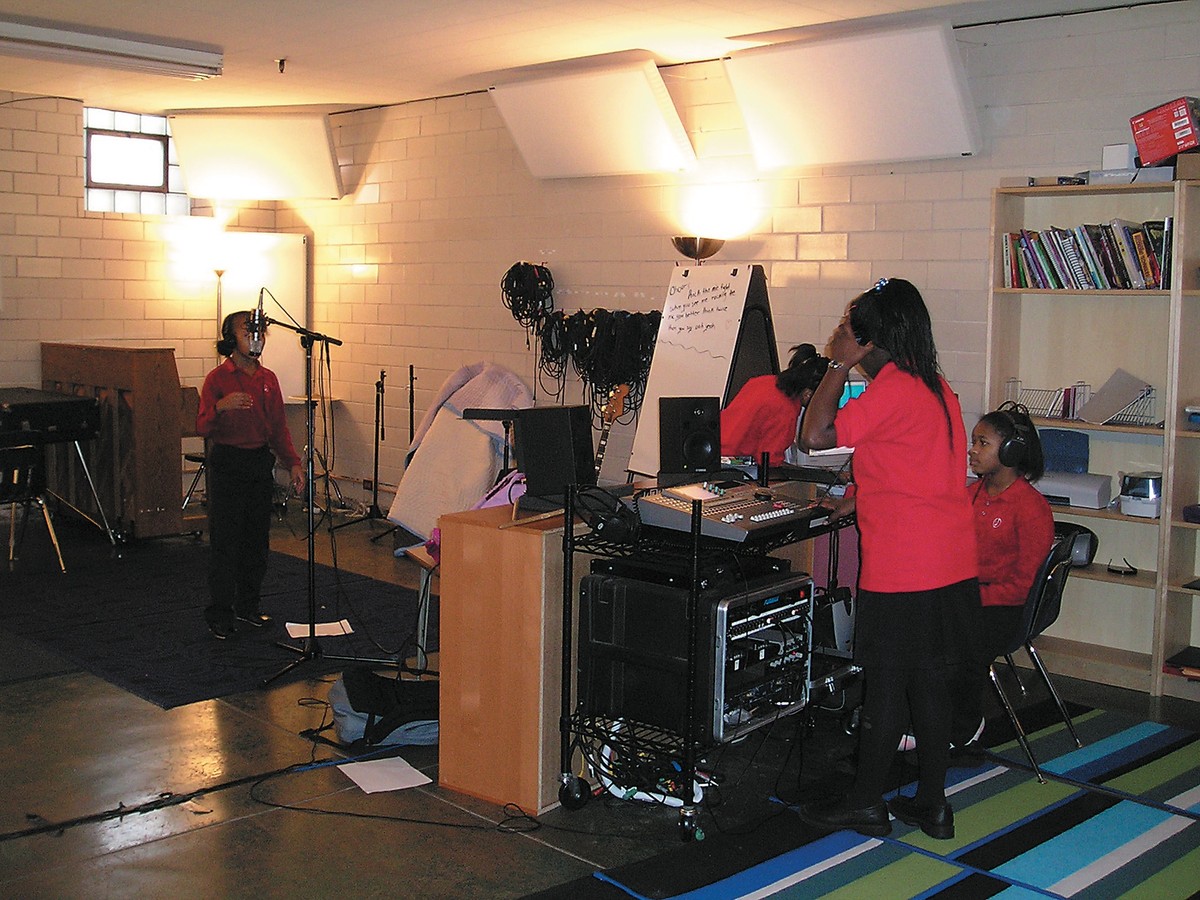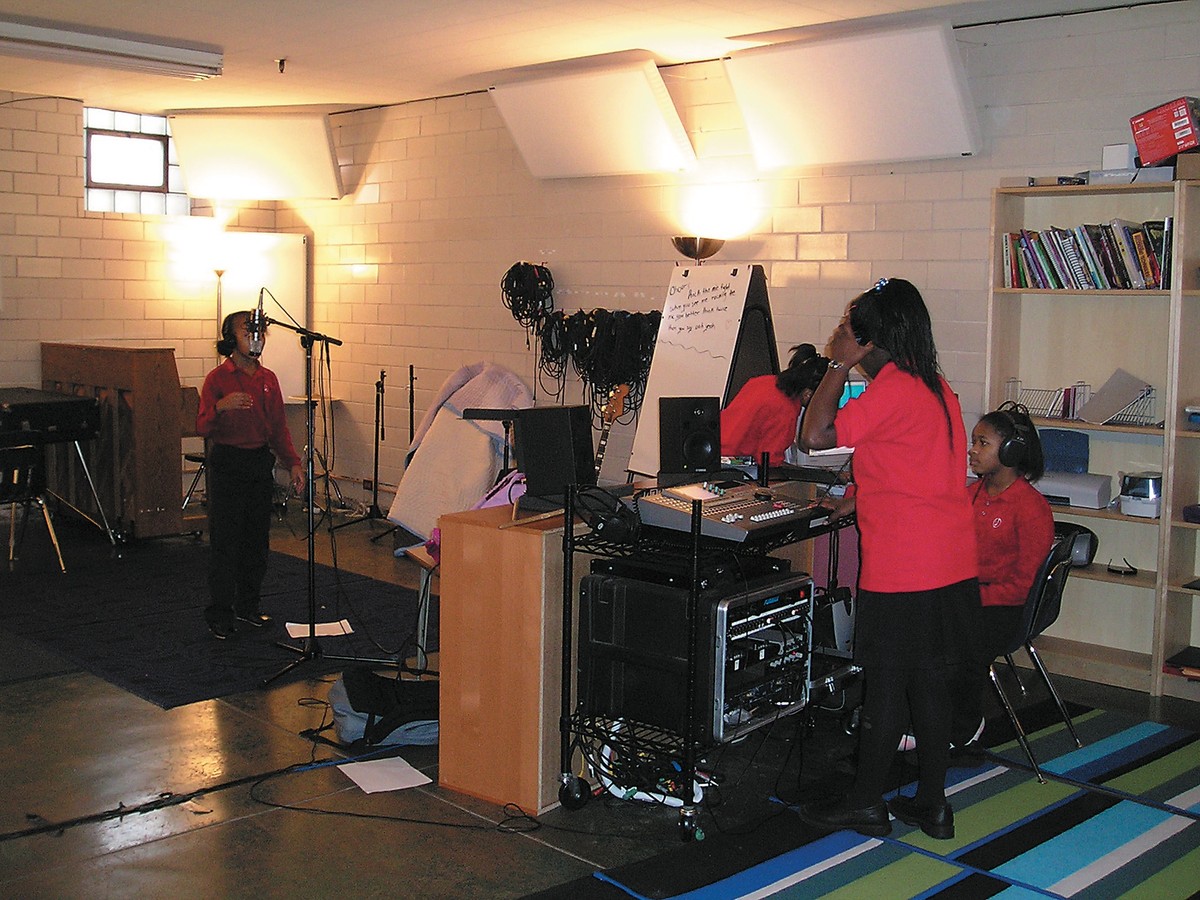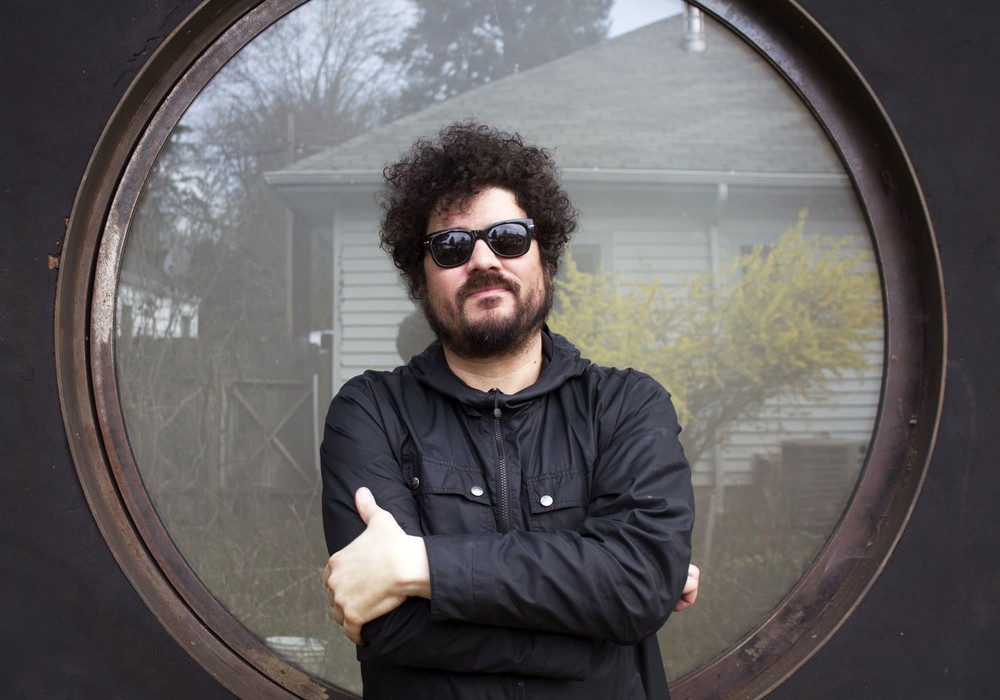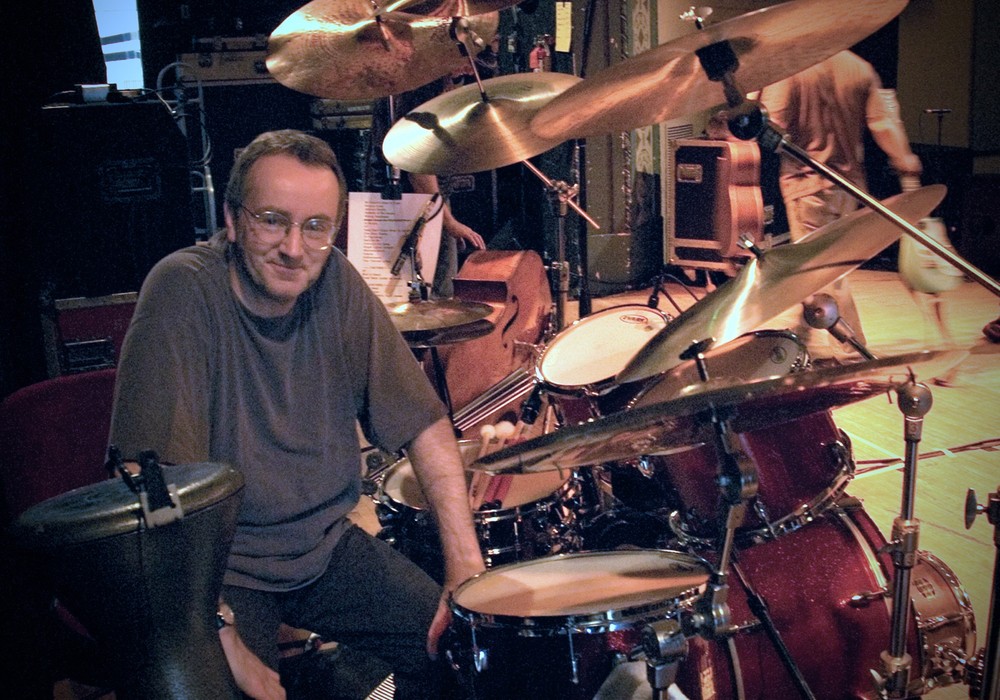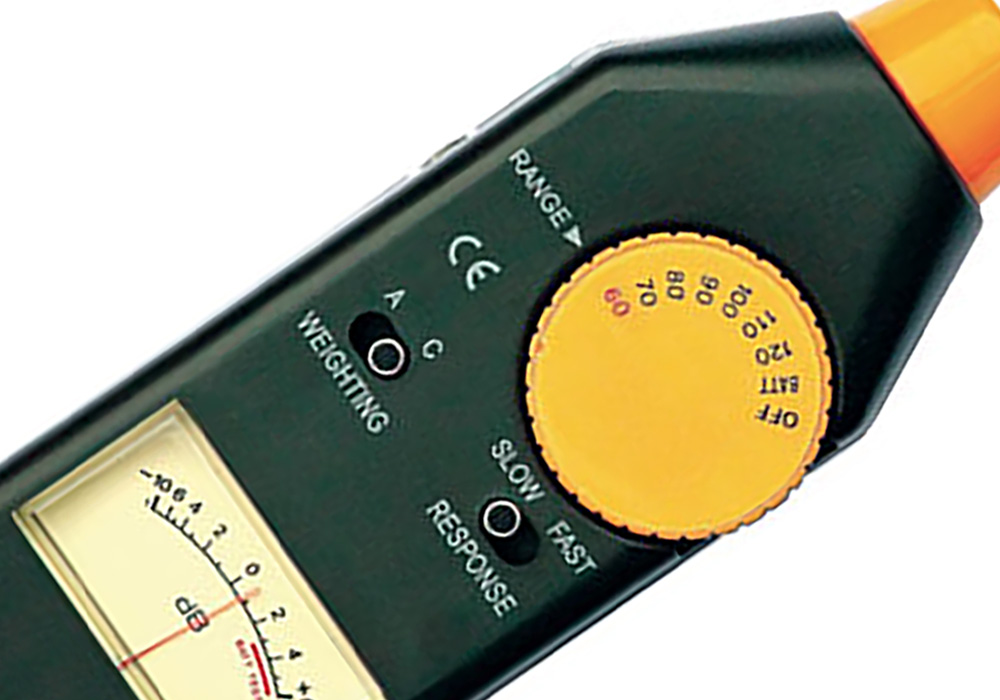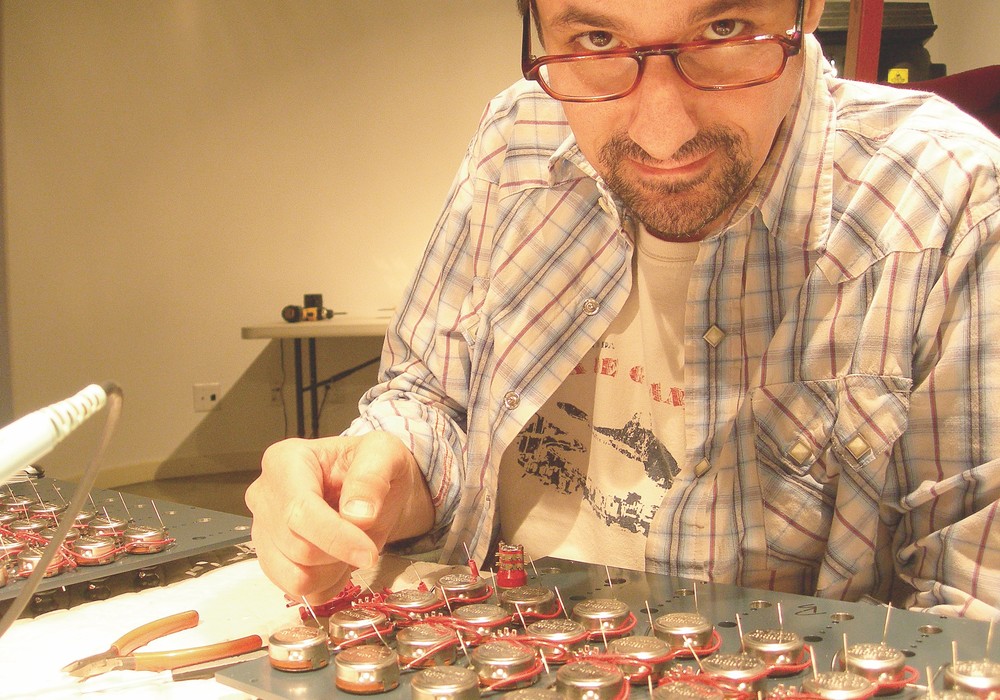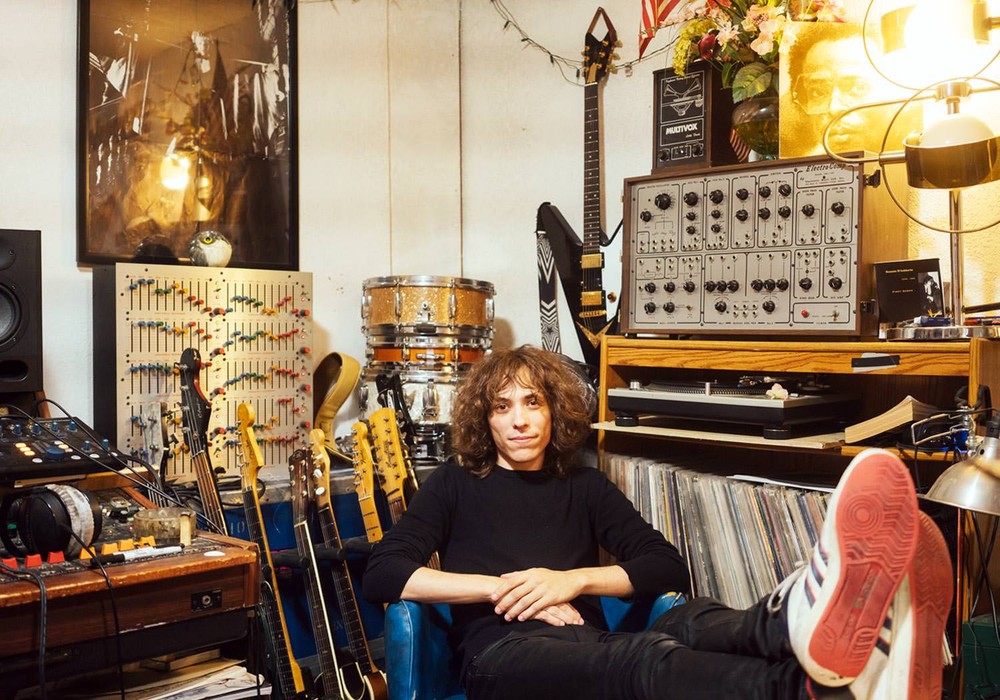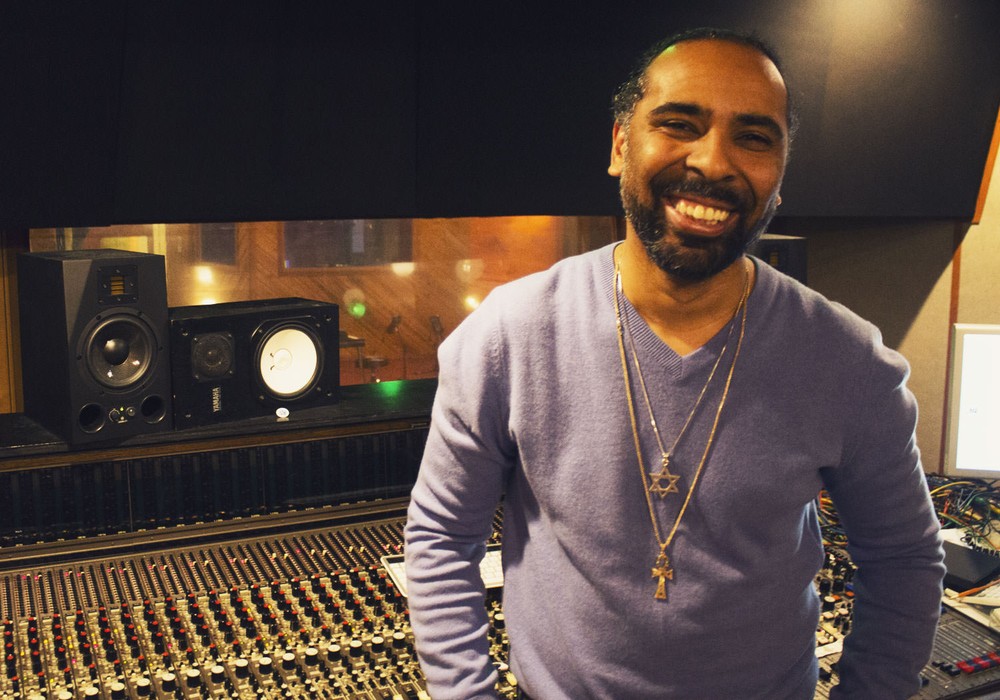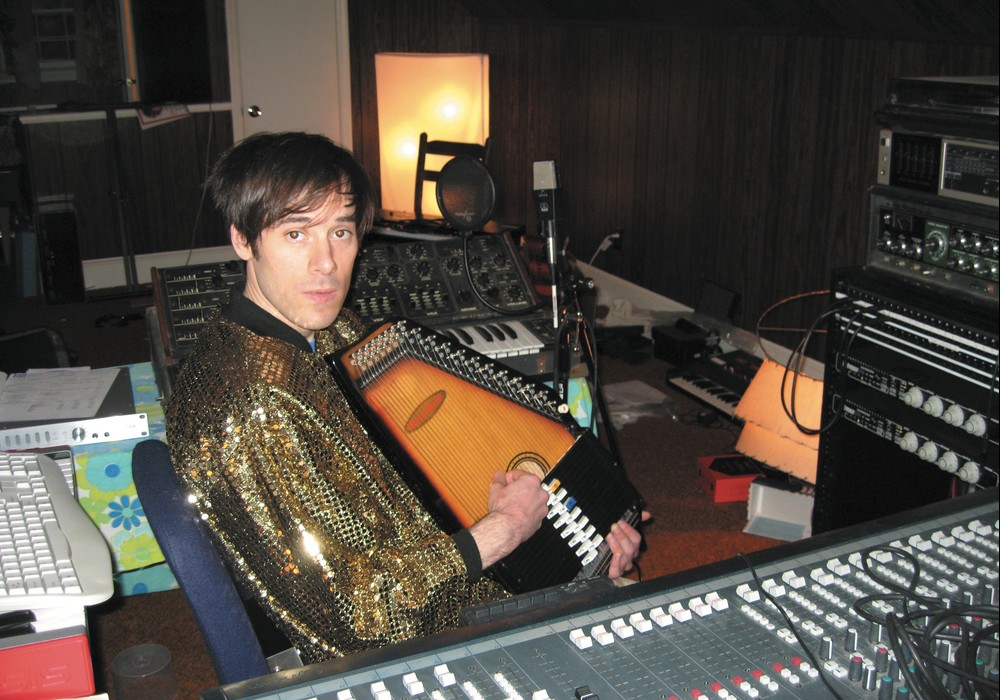It's 10 a.m. It's snowing. You drag your ass into the studio anyway. Flip on the lights. Nice, warm, indirect lighting. In fact, that's why you wanted to work in a studio as a kid: It seemed nice and warm with music in it. Power up the racks. Power up the AW4416. Power up the VAIOs. Sit down at your desk and stare at a full calendar. You can't complain, but how in the heck is it all going to get done? And then the phone rings. The voice is familiar and desperate: "We've got to get in there today! Today! We're ready. We've got to get that track done. We're ready and it's got to get done or we won't make our deadline!" The voice is familiar and it's the voice of a fourth grader, upstairs, calling from Ms. Johnson's room.
The studio is in the basement of an elementary school. The Choir Academy Charter School. Basically a public school with additional funding from a well-known institution called the Chicago Children's Choir. It's open admissions and the kids are Chicago public school kids: mostly black, some Latino, Asian and white — mostly working class. Like any kids, if you listen for a minute just about every one of them will blow your mind and make you wonder when you yourself fell off the "innovation or death" bandwagon and started recycling banalities in your engineering, producing and playing.
Upstairs the kids learn the three R's. They also learn to sing in choir, to read music in piano, and to play a mean djembe in percussion class. They walk quietly through the halls in straight lines and they get sent to detention for "talking back". Downstairs, in our one-room CA Sounds studio, they let it all hang out. They swarm over PCs running ACID, Fruityloops, WaveLab and a weird online Sims-like game called Avatar High. They jump from our old Tama kit to my Rhodes MK1, my Telecaster, my old J- bass copy, the Ozone controller. Kids run by with everything from Oktava MC012s to Rode NTKs. Rubber bands fly off of shockmounts, cables coil and uncoil. Groups of kids gather in corners with clipboards, arguing. You think they're writing love notes, but they're writing lyrics. Groups cluster around screens and you think they're playing Powerball, but they're trying to get that 808 kick placed right. Some lie on the floor with enormous sheets of paper spread out in front of them and you think they're drawing pretty pictures but they're designing CD cover art and promotional posters. And just when your head is about to explode from the noise and confusion it's suddenly dead silent and a tiny fifth grade girl is standing in front of a mic singing a modal hook, and between her line, the incredibly fat beat, and the deeply ambiguous and bizarre lyrics, you'd swear it was the best hip-hop you've heard since The Low End Theory. Maybe even better. The funny thing is you can't figure out how it all came to be in 20 minutes. I figure it's shop class for the 21st century — what shop class really could have been (and maybe was in some schools): The obliteration of the barriers between mental and manual, concept and execution, theory and practice. Every class of 15 or so students comes through once a week for 50 minutes. Then every day during study hall we have open studio hours where people schedule sessions for additional projects. Sometimes we spend a class talking about electricity at the atomic level, or about analog to digital conversion. We play sine-wave tones to demonstrate phase cancellation. We talk about routing, gain, mic placement, nodes and antinodes, harmonics and timbre, all of that. Sometimes we take notes, draw diagrams and take quizzes. But mostly we crank out the projects, pieces, songs — I don't even know what to call them because increasingly they defy genre.
Remember, these kids have broad influences. First of all, as sterile as top 40 R&B and hip-hop have become, the radio is always on at home and the music has conditioned the kids to deep eclecticism. It seems completely natural to a fourth grader to drop a sitar sample on top of a Clyde Stubblefield shuffle. Or, better yet, pluck on that Tele and make it sound like a sitar. Then there's church, where (this being Chicago) most of the gospel flat-out rocks. Mom, Dad Grandpapa and Grandma listen to Sade and Anita, Curtis Mayfield and Johnny Taylor, Miles and Coltrane, Beethoven and Rachmaninoff. In the eighties and early nineties their parents might have been hitting the clubs as house music exploded out of the South and West sides. It's all floating around in the kids' little heads. There's hardly a child in the place who does not immediately recognize the opening guitar lick to "Love and Happiness", and if you play it for them they'll immediately smile and start bobbing. Deep and broad roots to their music. You can hear them.
How much fun is it to walk through the halls filled with 250 musicians, engineers and producers, most of who have excellent taste and could care less what some A&R half-wit might think? At any given time there might be 50 projects underway, and almost every kid I run into has a suggestion, plan or riff to tell me about. "Are we tracking the vocals today?" "Can I be first on the drums? 'Cause if that kid pushes me out the way again I'm going to punch him in the eye!" "We've got that last verse finished and it's hot." "Why did you take Avatar High off the computer?!?" In a year and a half of school we've put out six CDs — everything from live percussion and choir recordings, to anthologies of over 100 original student projects — hip-hop, pop, rock, jazz, spoken word and the genre-defying. And the coolest thing is damned near every kid knows every song, even the songs they can't stand, even the songs recorded by kids they can't stand. They've created a whole musical culture.
Now they are collaborating with students in New Jersey and Australia where teachers are running similar programs. Already they've completed several projects long distance, trading beats and tracks back and forth. In Melbourne a teacher named Matt Ridge runs a studio for high school students at the Sydney Road School. They recently sent me a stunning CD of original hip-hop and punk stuff. For five years now jazz pianist, composer, and educator Michael Cain along with musician, educator and music business visionary Joe Pignato has been running a program called Digital Playground at a school in Hoboken, NJ. They've produced four CDs of amazing music, much of which was developed out of group jamming and improvisation. In "class" I try to push things thematically and musically. I say: "Give us something we've never heard before." But really, I don't have to. One day a seventh grade class decided the topic was "Ice Cream". I was doubtful, expected something cute and narrow, but I kept my mouth shut. I had no clue. "Flava" turned out to be a four-minute hip-hop opera that left no metaphor unlicked, and that sported a cast of characters to rival the movies Friday and Barbershop combined. A sixth grade class got fed up with arguing about topic and form. So they set up a stereo pair and improvised a three-minute percussion piece on the spot. During the playback they started chanting a hook that locked perfectly both rhythmically and emotionally: "I bust your face, I take your cookie. Gimme some of that cookie now!" Four part harmonies sprang into being. A rap was quickly jotted down. And in 45 minutes we had "Unknown Cookie" a statement about everything from simple orality and contemporary avarice and greed to that weird pre- adolescent mix of love and hate, sex and violence that most of us don't really want to think about too much. And it flat-out rocked.
I wish the groups were smaller. I wish I had more time to teach, to sit down and pick apart a beat, or a lyric, with one or two kids and really get into it. I especially wish I could do that more with the many kids who are brilliant composers, players and engineers but struggle terribly with their regular academic classes for many different reasons (the connections can be made and they help a lot). But the lack of time and space has its advantages. Things move quickly. The music is made at a sometimes frantic pace that encourages spontaneity. And I'm usually too busy trying to help a student find the right cable and press the right button to second guess their creative decisions. Now that they know something about how to use the tools, I spend more and more time just watching, or even standing out in the hall "taking a break" while they work. I like to leave when they're working smoothly and sometimes I leave when they're arguing. Either way it changes everything. You remember the first time it was your fingers on the faders and there was no one there to tell you when, what and how. I come back and sometimes I talk, sometimes I don't. I do tell them what I think musically and technically. But they know the real call is theirs to make. It's precisely because they can tell me to "go to hell" that I can critique and provoke, usually without squelching. The danger is not that "the kids won't be able to express themselves," or their meek little voices will be "silenced". That's a PC fantasy. These kids are nothing if not assertive, direct and honest. Whether society as a whole will listen to them is another issue, but in school it's far more likely that your ear drums will be ruptured by a fifth grade opinion than not. The danger is more subtle. You can steer them musically and technically (which is very different than teaching) without even realizing it. And pretty soon they're making your music instead of theirs and we've missed out on something we desperately need: something new.
I'm standing outside in the hallway and a fifth grade girl pokes her head out and says, "Mr. Jaffe, tell me again how to set the attack on the compressor." I make for the door and she says, "No, no, just tell me, we're going good in here. You can stay outside." I tell her and the door closes. I think they're learning a few things. How to work the gear for sure. How physics is real. How to work collectively, which is still hard for many of us. How to realize an idea. How to write and compose and play. How to argue. How to find satisfaction in your work. How to take the horrors and the wonders of this world and this life and make something of them for other people to listen to. How to work. They're learning all that, I hope, but mostly they're making music for us. r
PS: To do this work kids do not need to start with any formal musical training or "ability." I've done recording projects in schools with no music programs with great success. All kids are musical, and have ideas and influences. One great advantage of multitracking is precisely that it allows composition and performance to be broken down into manageable elements to match the skills and experience of the artists. Anywhere there's a kid, a mic, and a simple recording device, original music can and will be made.
